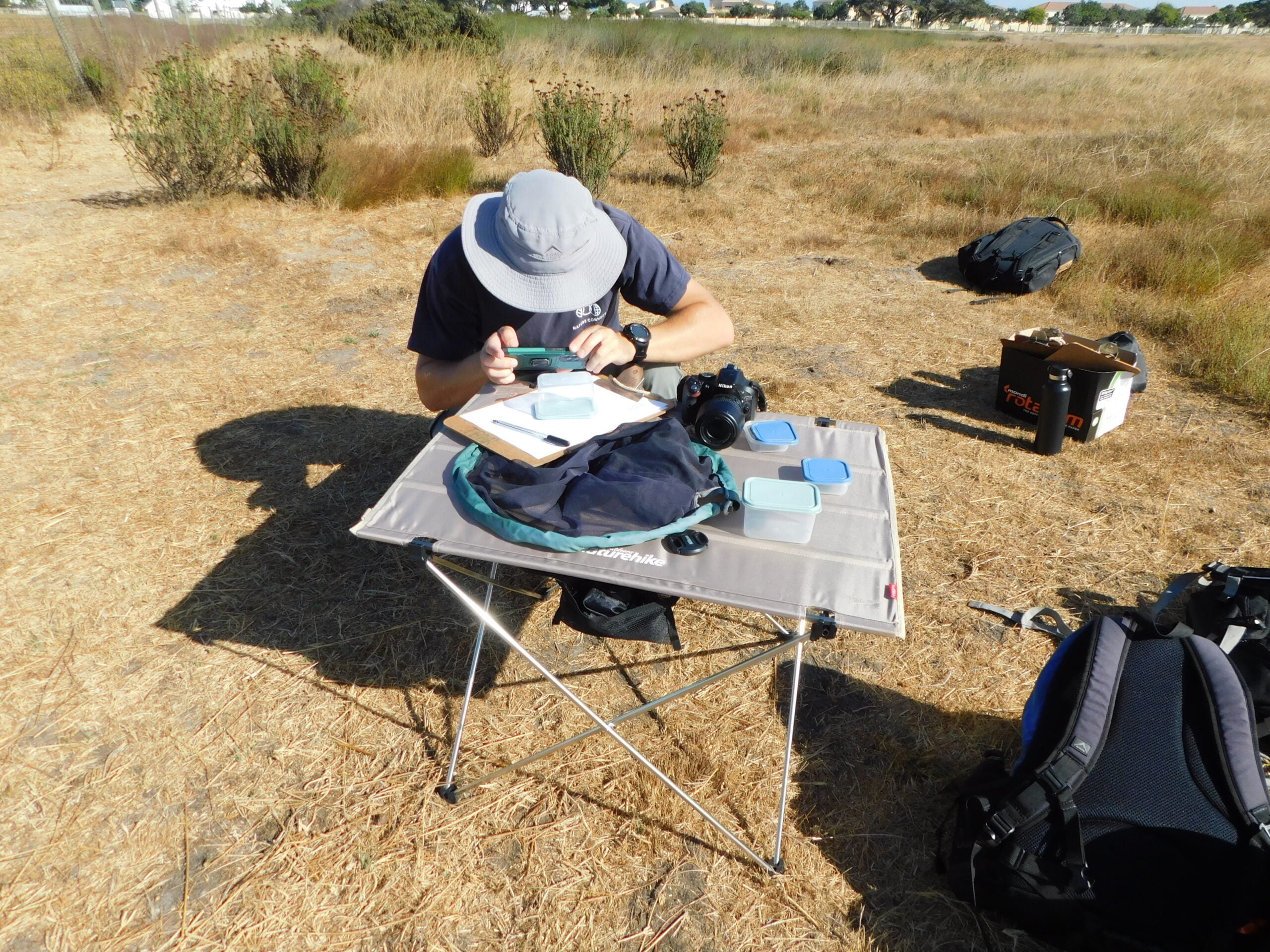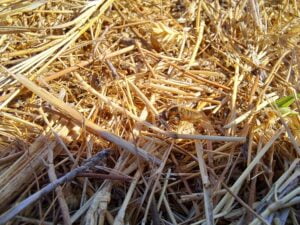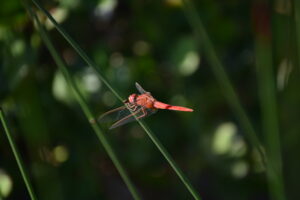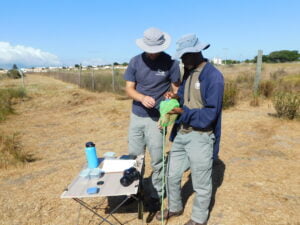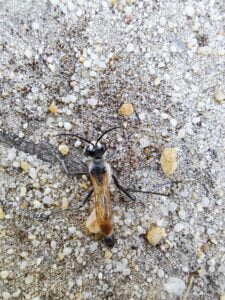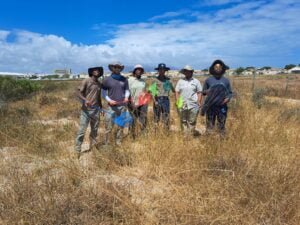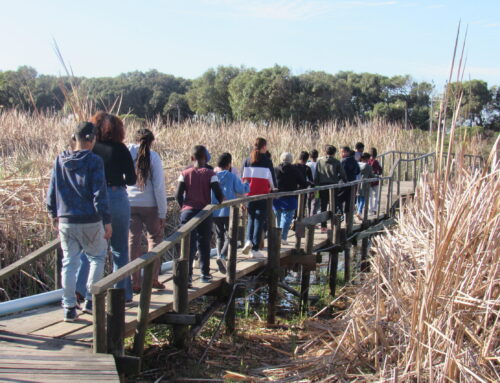Written by Luke Foster.
Nature Connect staff recently conducted an insect survey at Milnerton Race Course conservation area. The survey was aimed at better understanding what species occur on the site and what roles they play in the ecosystem.
Not many people realise just how incredibly diverse the insect world is. Of the whopping 1.5 million animal species out there, guess who’s dominating the scene? Insects, that’s who! They’re responsible for two-thirds of the entire animal biodiversity on Earth. For a bit of perspective, consider the numbers: there are approximately 6,000 mammal species and around 11,000 bird species on the planet. Now, brace yourself – beetles (just one of the many insect orders), those six-legged marvels, steal the show with a staggering 350,000 species. This highlights the stark contrast in diversity within the insect realm compared to our more familiar furry and feathered friends.
The benefits of insects can not be overstated. Not only do they provide a direct food source for so many other creatures that we rely on but also through pollination contribute to many of our crops. Most of our fruit species rely on insects for pollination, but also products like chocolate and coffee will become increasingly scarce if insects continue to decline. Insects are also responsible for decomposition of dead material and contribute to clearing away a lot of waste generated by humans. In the United States for example, dung beetles alone are worth $380 million every year for their services in breaking down manure and aerating soils. Insects also contribute greatly to the production of medicines, clothing and scientifc breakthroughs.
Threats to insects are numerous, with the usual suspects of habitat loss, pollution, invasive species and overexploitation playing a role. Additionally, climate change affects insects disproptionately from other animal groups as they are much more suseptiable to temperature changes, especially those within aquatic enviromnents. Insects are also incredibly likely to suffer from co-extinction, which is when the extinction of one species leads to the extinction of another. This is due to some insects being so specialised that they rely completely on the presence of another species for their survival.
The collapse of insects website (Janicki et al. 2022) provides fantastic graphics and information regarding the current plight of insects, but also outlines their incredible diversity.
With the widespread insect decline around the world, Nature Connect staff based at Table Bay Nature Reserve have been eager to create a baseline species list to compare with potential future studies. Thus an insect survey project was initiated late in 2023.
All sightings are recorded on iNaturalist for identification and as a record of species presence. The initial survey managed to identify 26 species, 11 of which were confirmed down to species level, seven to genus, one to subtribe, two to subfamily, four to family and one to suborder. Further identifications are still ongoing to determine more precise classifications, the iNaturalist project can be found here.
Some of the insects identified so far include:
- Spotted Blisterbeetle
- Epauletted Hover Fly
- Citrus Swallowtail
- Vestal
- South African Mantis
- Blue Emperor
- Broad Scarlet
- Common Bluetail
- Long Skimmer
- Nomad
- Funnyface Locusts
- Ground and water beetles
- Bee Flies
- Small Mayflies
- Stink bugs
- Sand Wasps
- Beewolves
- Cutworm Wasps
- Thread-waisted Wasps
- Cloak-and-dagger Bees
- Square-headed Wasps
- Spider Wasp
- Short-horned Grasshopper
- Wingless Grasshoppers
- Bandwing Grasshoppers
Note: All individuals were released immediately back into their natural environment after photographing on site, and no specimens were taken for collection purposes (as stipulated by the CapeNature issued permit).
Reference: Janicki, J., Dickie, G., Scarr, S. and Chowdhury, J. (2022). The Collapse of Insects, Reuters. Available at: https://www.reuters.com/graphics/GLOBAL-ENVIRONMENT/INSECT-APOCALYPSE/egpbykdxjvq/ (Accessed: 14 February 2024).
- Bee fly – Genus Notolomatia
- Broad Scarlet dragonfly – Crocothemis erythraea
- Carefully removing insects from nets for identification
- Cutworm wasp – Genus Podalonia
- Insect survey team

